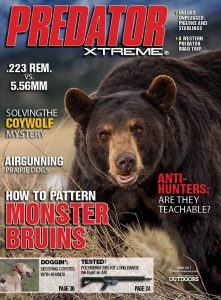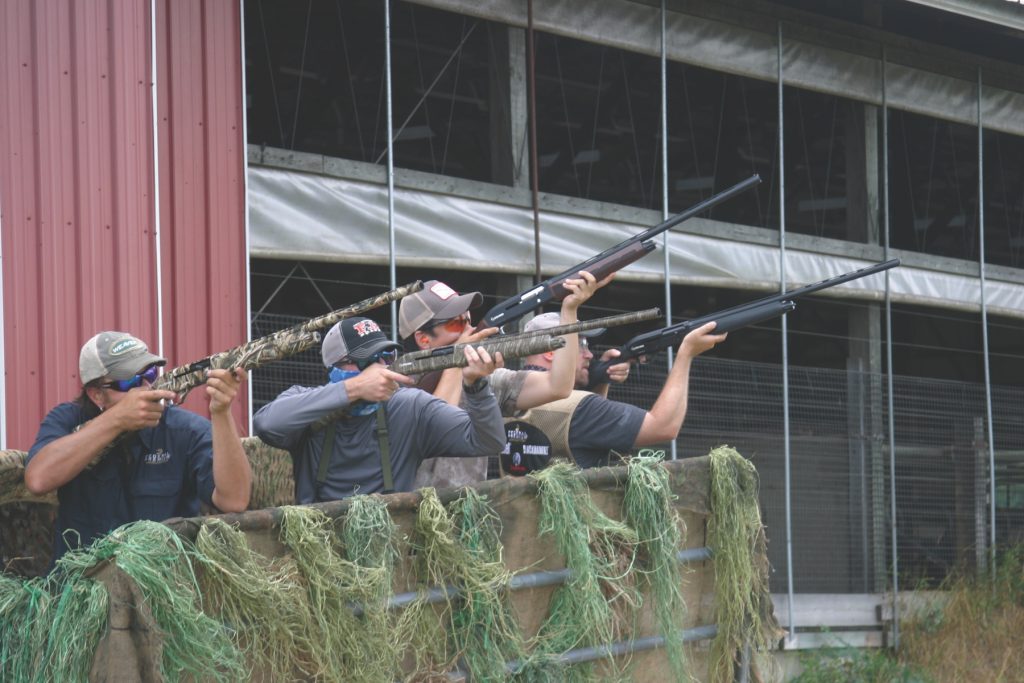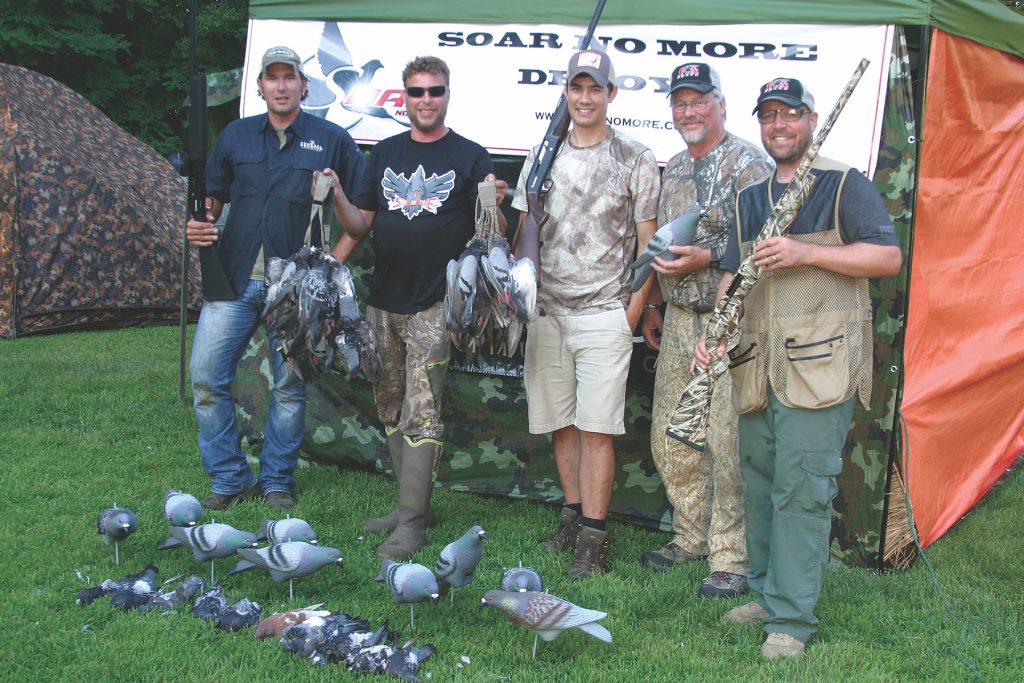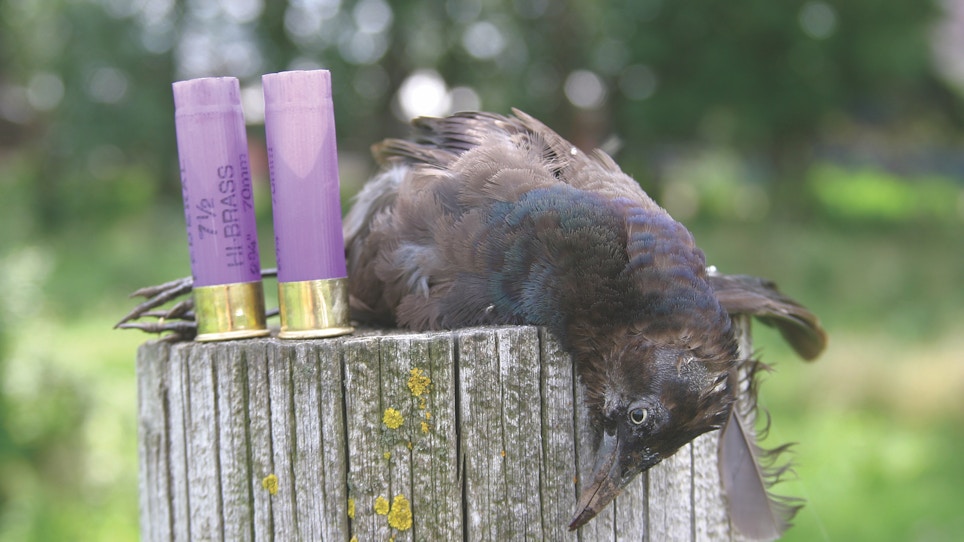It was a very warm July morning when an old black Ford pickup rolled into hunt camp. It was too early for coyote fur and too late for rock chucks in the tall grass. However, our group was setting up a plan for a kill net to take out a massive number of disease-spreading trash birds that infested several local dairy farms. In doing so, we’d be reviewing Federal shotshells, Stevens Firearms and other shotguns. The old truck made the trip down south out of the Minneapolis and within minutes several more vehicles rolled into the parking area.
Team leaders, Todd Gifford, a professional animal control expert (Black Bird Predation Service TM), and JJ Reich, communications manager for Vista Outdoors, were taking control of the camp. Todd had done all the pre-scouting, blind setups and communication with the distressed farmers. JJ, on the other hand, had seen to it that there was ammo in large quantities, one electric-powered Champion clay-target thrower for some warm-up shooting and a pile of additional bling and product that each shooter was welcome to take into the field.

From our June issue
I was personally testing the new Browning A5 Sweet Sixteen. At the time, it existed in only a few test shotguns. Federal, being a complete full-product-line ammunition company had offered up a full case of 16-gauge ammunition and now it was time to settle into the lightweight and fast-swinging sub-gauge scattergun.
Stevens, being a part of Savage Arms, brought along its new recoil-operated autoloader. As a final note, my partner Tom Hanson, out of my company Ballistics Research & Development South Dakota, elected to take a Mossberg Model 930 12-gauge snow goose gun, with an extended 13-round magazine. It was nicknamed the “Buzz Saw” — or “Saw” for short. After a few rounds of clay targets, it was time to pick up and head for the first of our problem farms.
Todd placed four gunners shooting autos without plugs in a blind he had positioned along a feed barn several hundred yards long. My partner and I were strategically placed on a fence line he identified as an escape route for birds that had been missed by shots. When taking on trash birds as in starlings, grackles or barn pigeons, it is not very easy to haul them back over the kill net after missing a shot, so we tried to minimize that.
We used high-brass lead shot in a 7½-pellet size. High pellet counts in dense patterns are best for smaller birds. As the show got started I screwed in an improved-cylinder tube. After a few shots with 11⁄8-ounce field loads my first several shots only sent starlings and a few pigeons dancing for altitude as they got through my spread.
While the four-man team in the blind had the advantage of a set of Soar No More pigeon decoys, and some well-placed cracked corn on the ground, Tom and I had to make the best out of general pass shooting the birds. Rest assured I’d soon be switching to the Browning Invector full-choke application.

Armed with Stevens shotguns and Federal shotshells, the crew held no punches while hammering starlings and pigeons.
Round 1 didn’t take more then an hour to complete. This was the farm with the least bird issues, but we had put a major dent in the starling population. On several occasions I caught the sound of Tom’s “Saw” cooking through as many as seven rounds in a single flock. Now it was time for a quick lunch at camp and on to the second farm, which held the mother load in terms of warm targets.
Getting into position on the second farm was a setup much like the first. Tom and I headed for a well-known barn wall downrange that we shot over in prior years. The main mass of five guns centered again over the bait pile and decoy spread. For some reason the exiting, or even incoming, birds always tended to use a route that put them directly over the corner of the back wall of the calf-feed lot. With a couple of cases of shotshells in hand, and a full choke installed in my 16 gauge, it was again game on. This run would start by working over at least 200 barn pigeons that lifted toward the south side of the farm. However, bad news for them was they were setting up for a return flight straight into seven hungry gun muzzles.
Tom and I were up for first blood, as four pigeons rolled passed us at about 10 feet over the deck with a clean open field for a back stop. The “Saw” went wild in my buddy’s hands, and I followed up with the 16 gauge. We sent all four birds to their next rafter-roosting place in the sky. The bouncing sound of shots raining down on steel roofs had not even subsided when the five-gun team in the box blind lit up big time. Again, overweight, grain-fed pigeons dropped out of the flock, as two others slid off gliding back toward Tom and me. We again pulled up and sent black lead shot into the sky ending one of the feathered targets forward motion. For the next half hour, it was slam shells into our shotgun chambers, lock onto a warm target and yank the trigger. When we finely got a break in action I had a cramp in my left hand from hanging on to my lightweight 16 so tightly and a bloody right thumb that caught something sharp at some point during the action.
Taking in some cold water and making an assessment of rounds available in open boxes, phase two began to take shape. The weather was turning with a building storm to the west, and as such both starlings and pigeons wanted to return to the shelter of the 10-or-so acres of steel buildings. It was now singles and doubles that made up the incoming targets. It was perfect, as we were not driving off the main mass of birds in a one-flock mass. When the shooting ended about three hours later we estimated we killed more than half the main flock of pigeons that reside in the dairy operation.
Specialized Guns for Specialized Work
Gunning junk birds has its own elements of a specialized science. As I mentioned about this brand of varmint hunting, it requires the right guns to get the most results. Yes, I have shot many different types of firearms during these kinds of events over the past 20 or so years. I’ve worked with Todd Gifford, but when it’s my call for what goes into the field it is almost always an autoloader with the plug removed. Varmint-bird gunning is for the most part a fast-paced event where you’re trying to kill as many targets as possible. Send all the firepower possible over the shortest amount of time is my motto.
In some cases, I use my own developed Metro Gun suppressor for 12-gauge shotguns. This always increases my net kill rate when several other shooters are also running suppressed gun systems. I have worked with and sold suppressed 12-gauge barrels to gun clubs across the country that require their use when taking on common crow — or in this case barn-yard flying pests. As a side note, the Metro Gun system does not require a tax stamp like traditional suppressors do.
Another direction, and one that I used on this hunt, was the use of my Browning BPS .410 gauge with 3-inch, 11⁄16-ounce 7½-lead shot loads. Sub-gauge guns, as in the .410 and even the 28-gauge can, suppress sound enough to add some extended gunning to a hunt. I shot a ranch for a local outfit that had been plagued with thousands of starlings that covered the whole ranch house area with droppings, to the point the small children couldn’t play outside. In that case I used a Ruger 10/22 with a Gemtech suppressor designed for the M-16. The only audible noise was the return spring on the rifle. Federal offers a couple sub-sonic .22 LR rounds for such applications. The .22 Sub-Sonic HP has a muzzle velocity of 1,050 fps and features a 40-grain hollowpoint lead bullet that expands at sub-sonic speeds. There’s also a .22 LR suppressor round that features a 45-grain hollowpoint with muzzle speeds at 970 fps. Both rounds are extremely accurate and work well for popping trash-birds.

Decoys are a great tool to use when trying to steer birds into your kill zone. This group used Soar No More pigeon decoys.
In terms of shotshell load selection, I know hunters that take on crow targets with nothing less then 3-inch, high-performance 12-gauge magnum ammunition. While this may seem a bit over the top when taking on varied varmint class birds, some hunters are always in search of the perfect day afield. Good ammo can make or break a day in high winds, bad weather or on extended-range shooting.
Getting into airborne-varmint hunting requires some preparation at the least. Scouting is critical in that you need to know where your targets are living. Then develop a plan as to how your going to go about taking them out. In general, I’ve found many famers to be quite receptive in terms of allowing a responsible hunter the chance to get a crack at farm-yard birds. If you can land a workable farm then you’re in good shape as future invites will likely be on the table. My Texas “Crow Patrol” friends work deals with pecan farmers for late-season deer hunting rights by working the nut groves and keeping crow populations down. With the correct guns, ammo and a solid game plan, this form of pest control can become very interesting in terms of an overall hunting experience.






